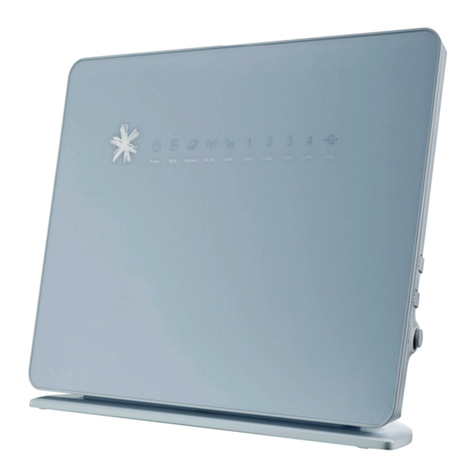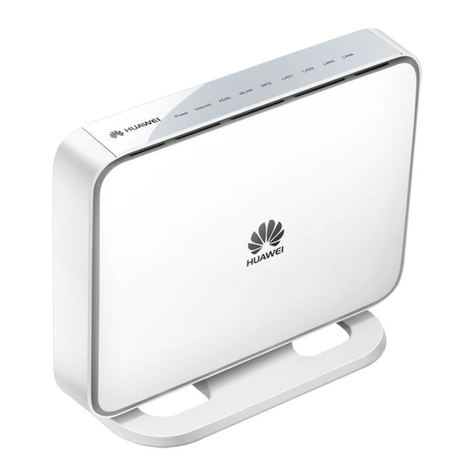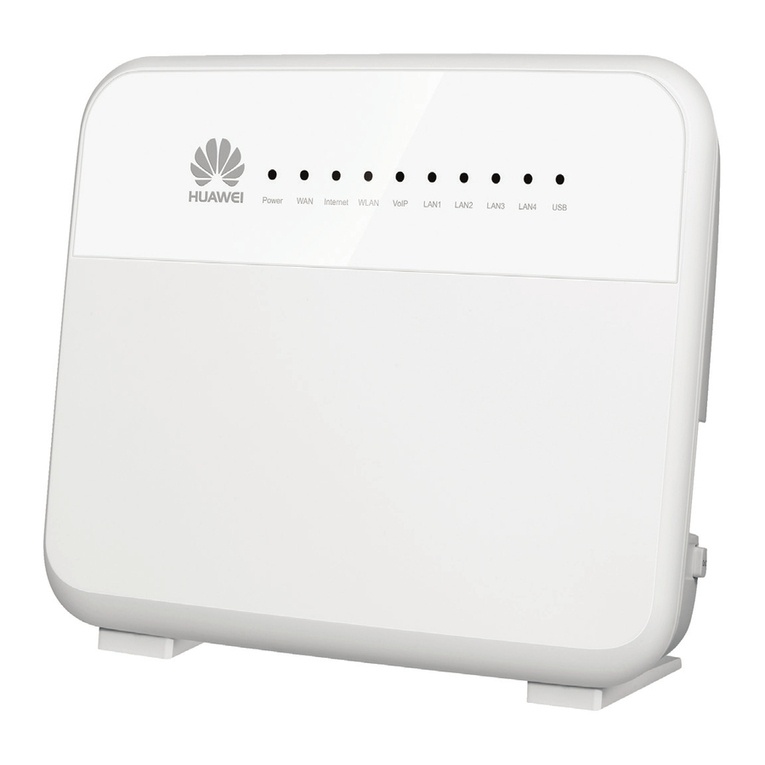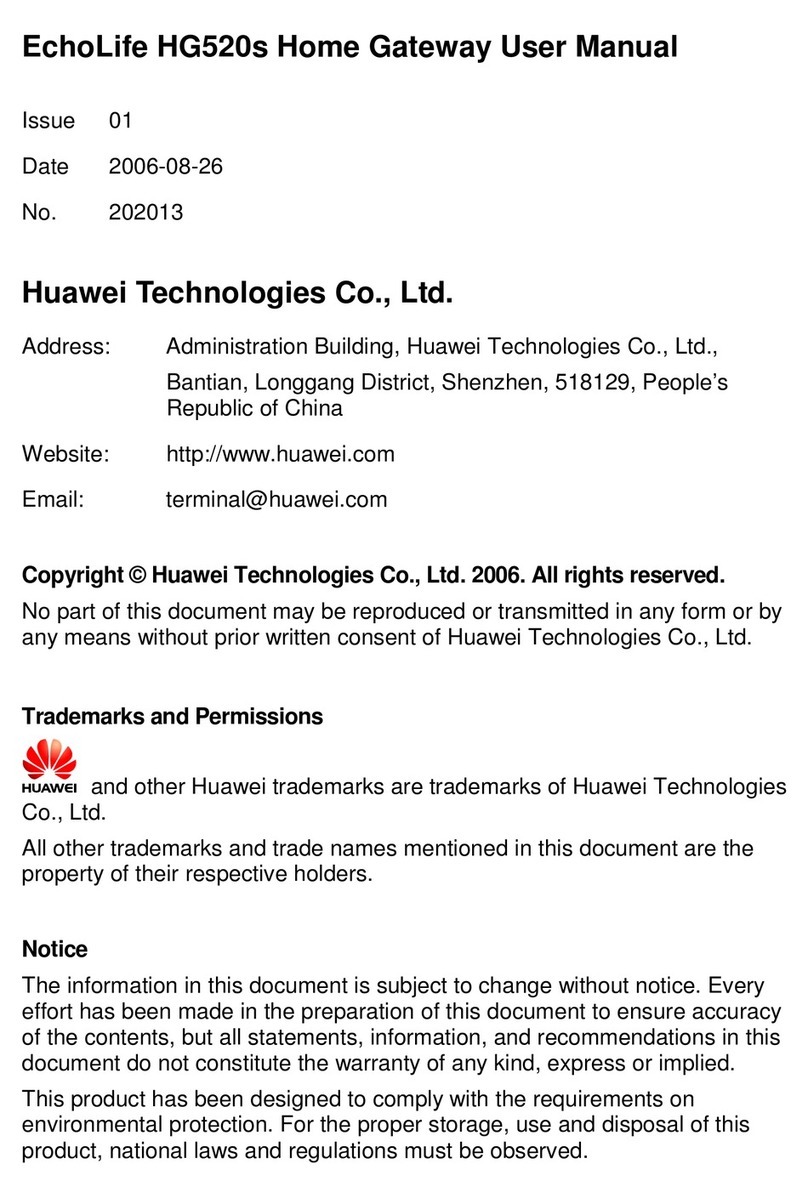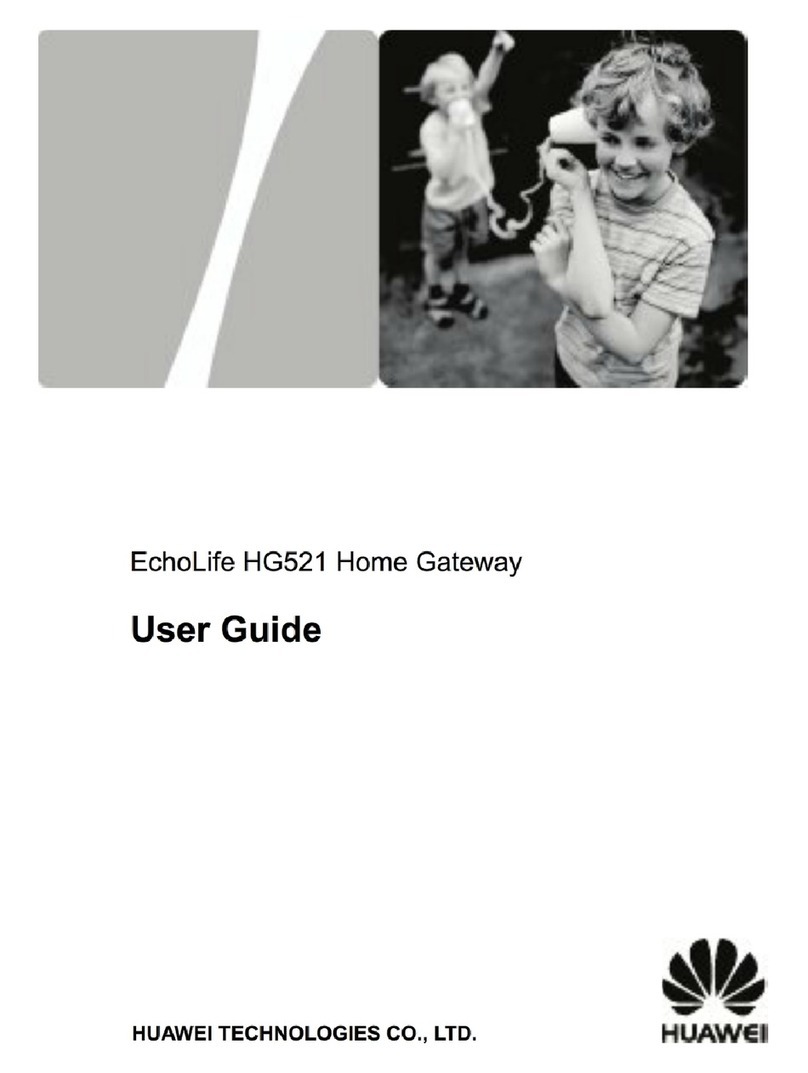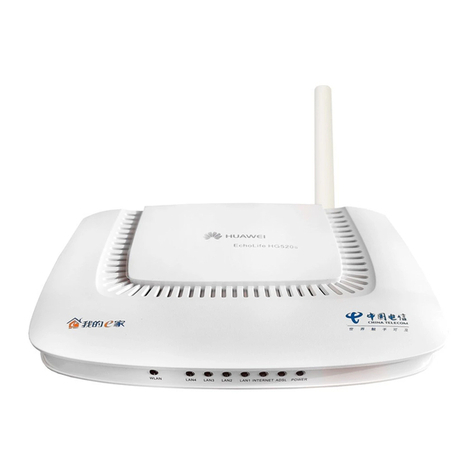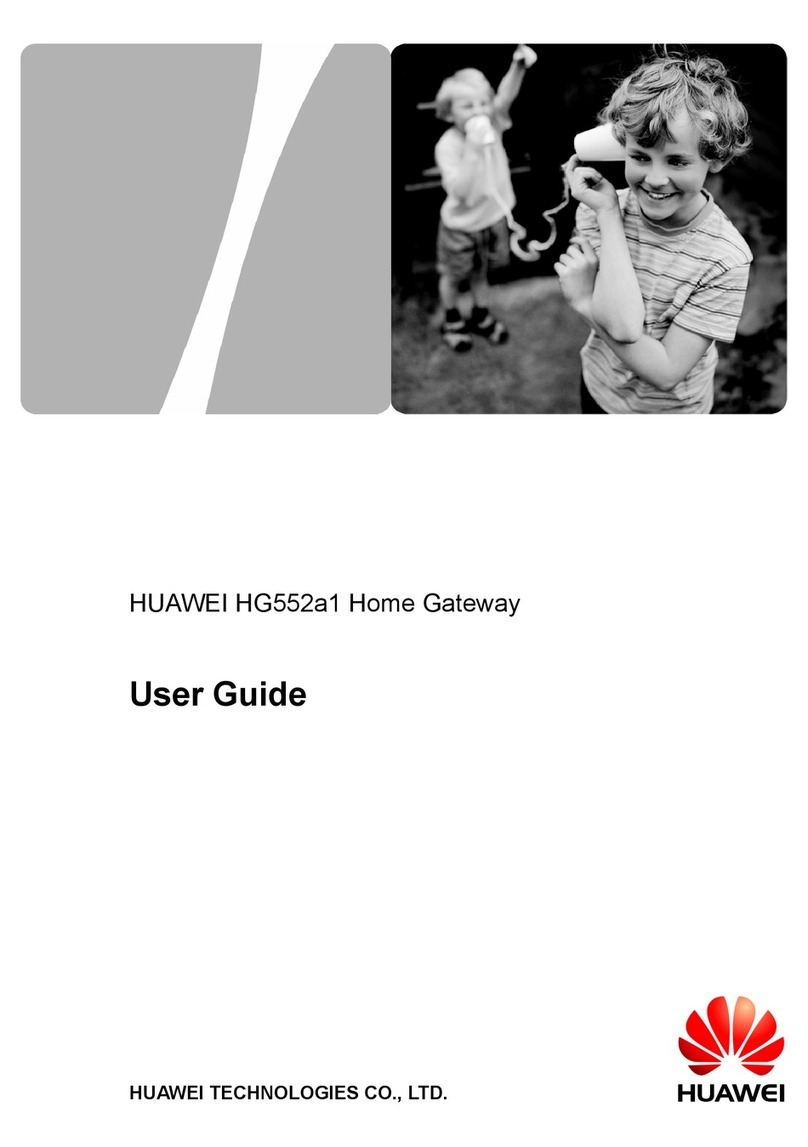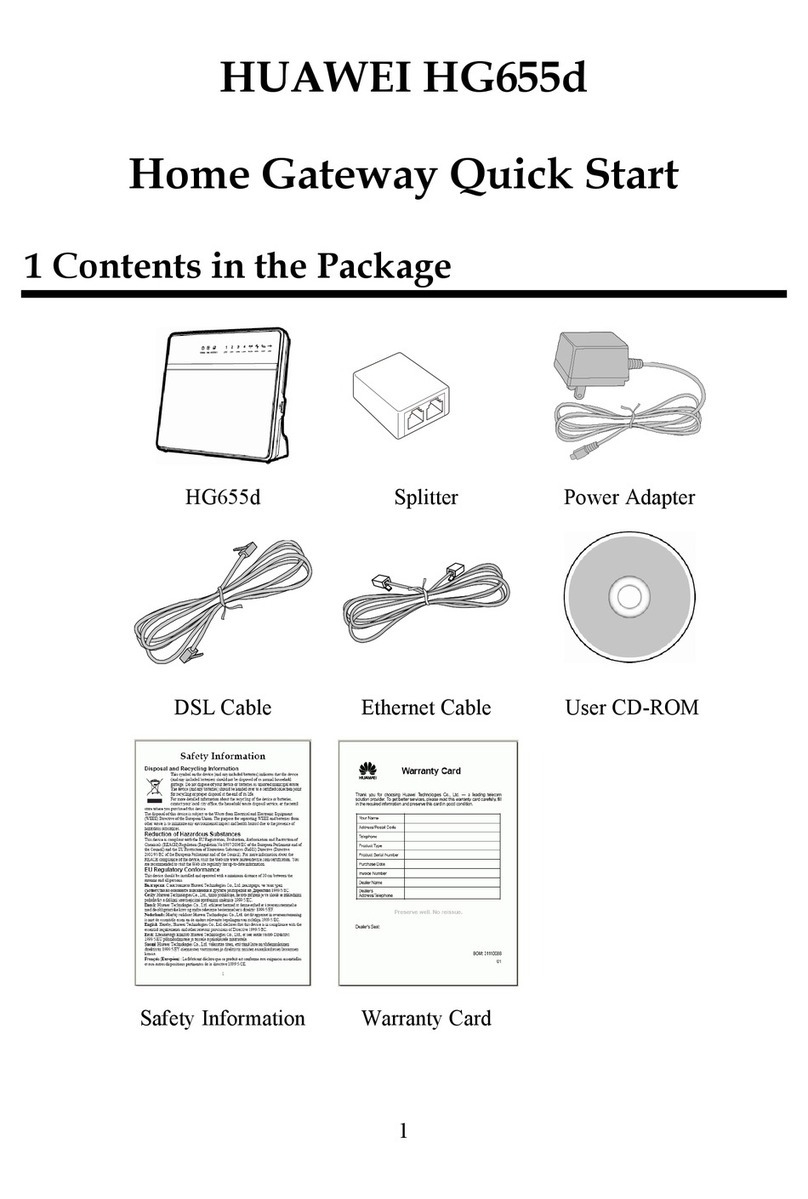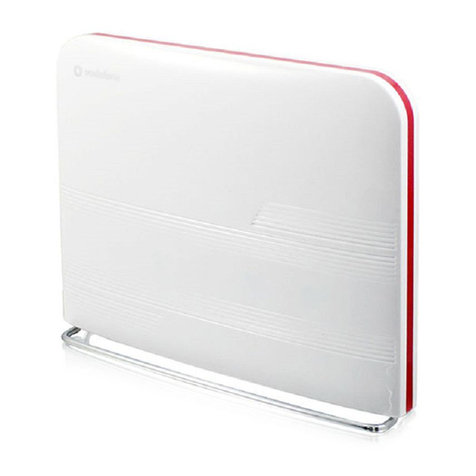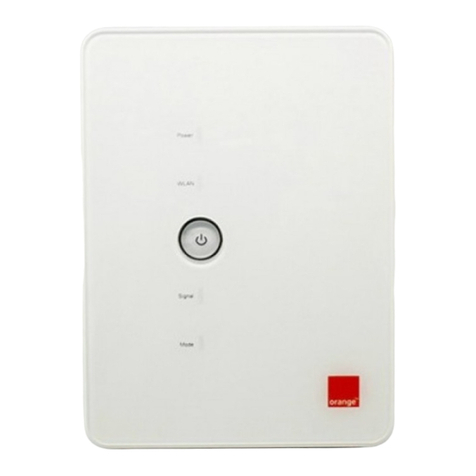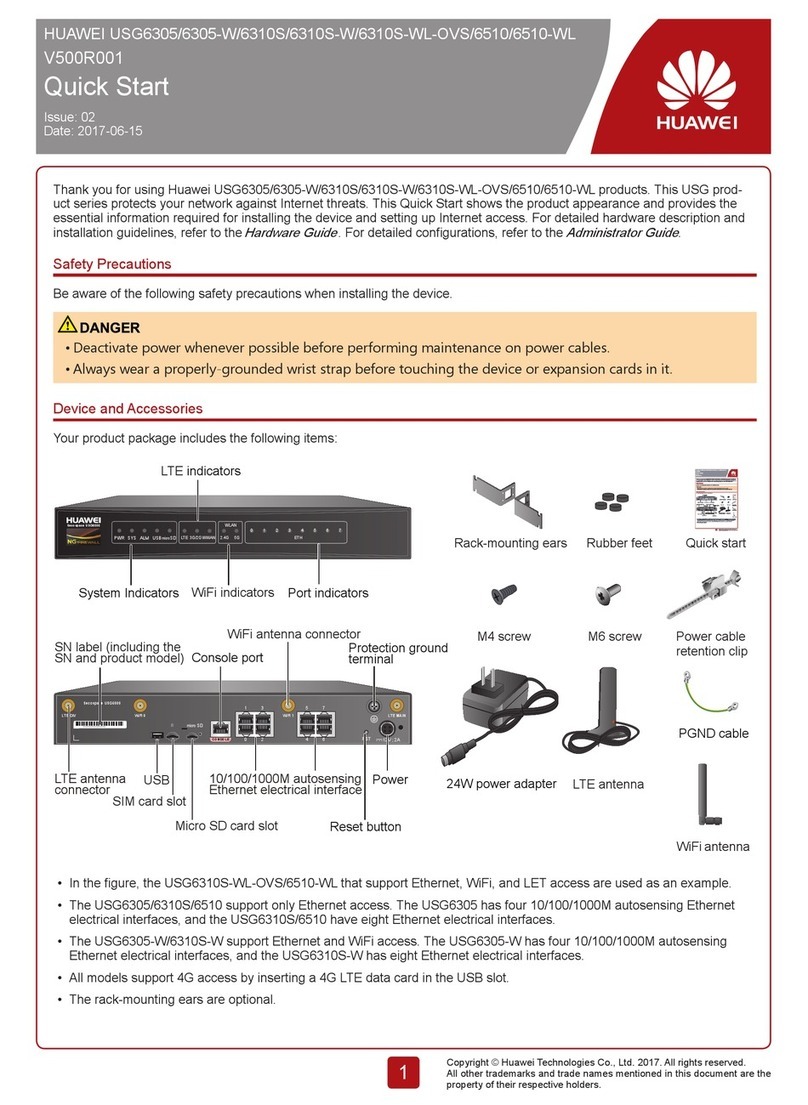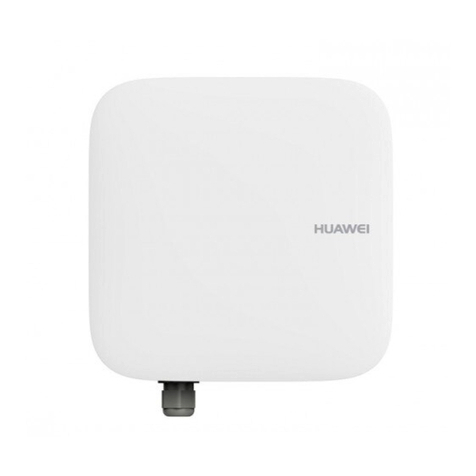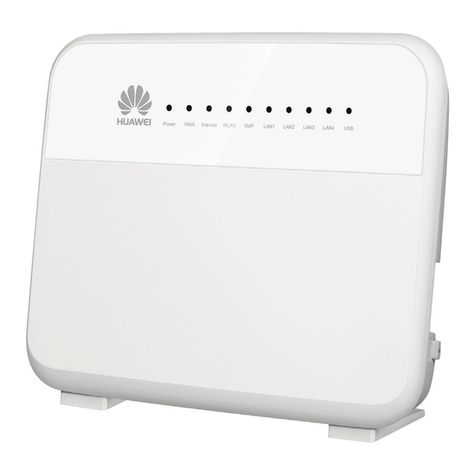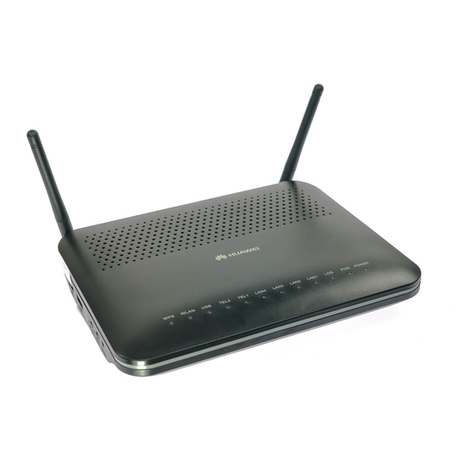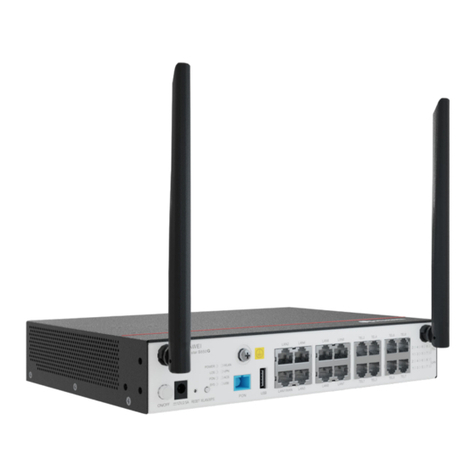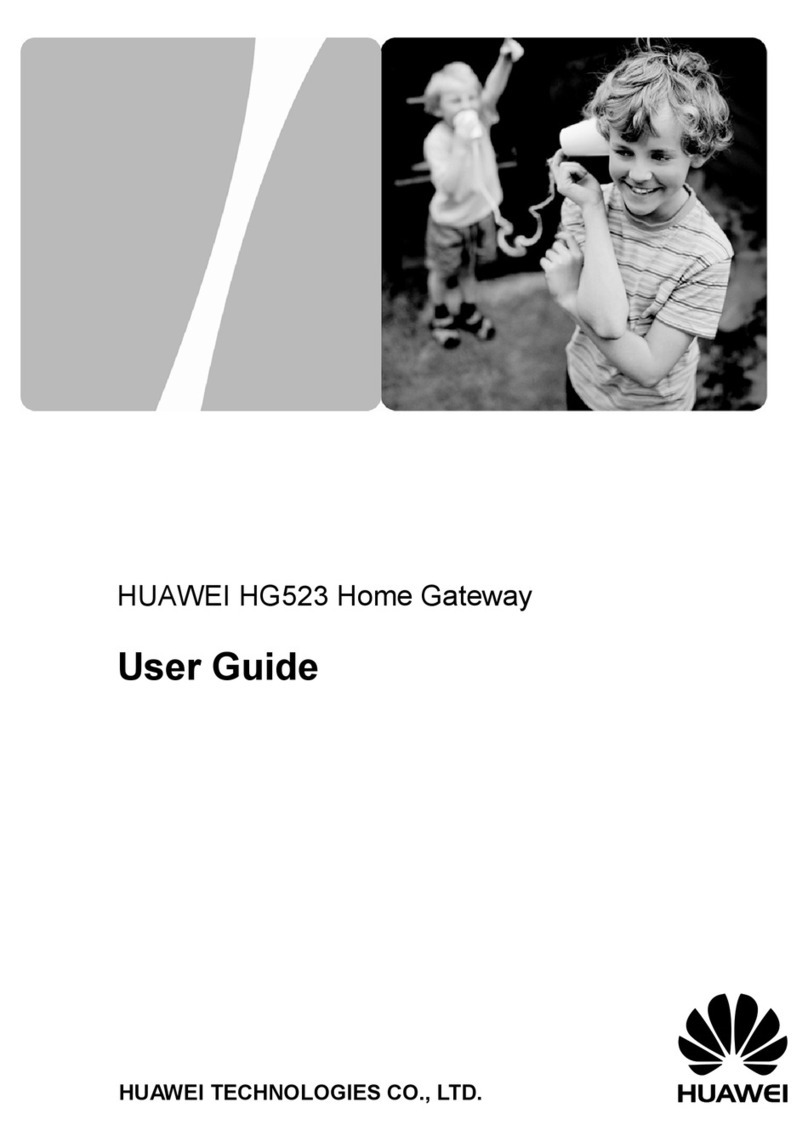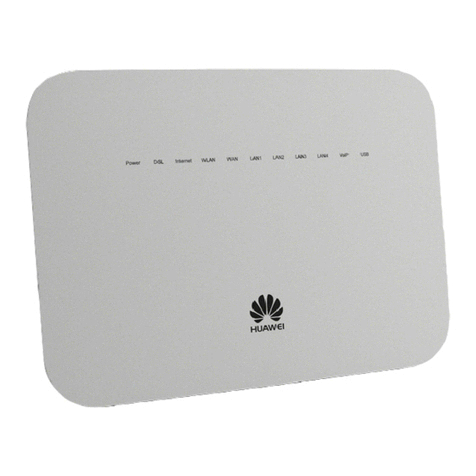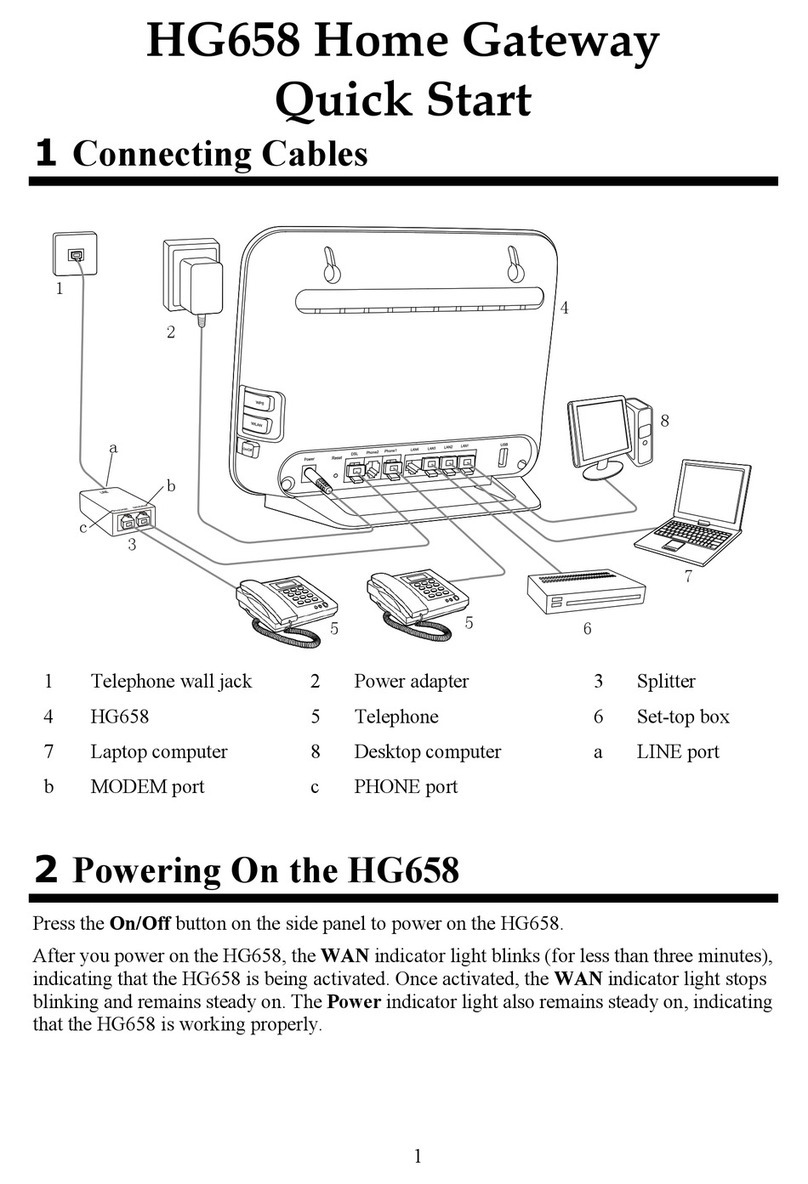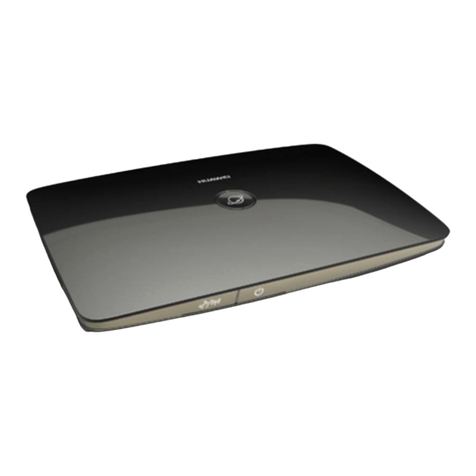Notice
Copyright © Huawei Technologies Co., Ltd. 2009.
All rights reserved.
1No part of this document may be reproduced or transmit-
ted in any form or by any means without prior written
consent of Huawei Technologies Co., Ltd.
2The product described in this manual may include copy-
righted software of Huawei Technologies Co., Ltd and
possible licensors. Customers shall not in any manner
reproduce, distribute, modify, decompile, disassemble,
decrypt, extract, reverse engineer, lease, assign, or sub-
license the said software, unless such restrictions are
prohibited by applicable laws or such actions are
approved by respective copyright holders under
licenses.
3
Trademarks and Permissions
4HUAWEI, and are trademarks or registered
trademarks of Huawei Technologies Co., Ltd.
5Other trademarks, product, service and company names
mentioned are the property of their respective owners.
6
Notice
7Some features of the product and its accessories
described herein rely on the software installed, capaci-
ties and settings of local network, and may not be acti-
vated or may be limited by local network operators or
network service providers, thus the descriptions herein
may not exactly match the product or its accessories you
purchase.
8Huawei Technologies Co., Ltd reserves the right to
change or modify any information or specifications con-
tained in this manual without prior notice or obligation.
9
NO WARRANTY
10 THE CONTENTS OF THIS MANUAL ARE PROVIDED “AS
IS”. EXCEPT AS REQUIRED BY APPLICABLE LAWS, NO
WARRANTIES OF ANY KIND, EITHER EXPRESS OR
IMPLIED, INCLUDING BUT NOT LIMITED TO, THE IMPLIED
WARRANTIES OF MERCHANTABILITY AND FITNESS FOR
A PARTICULAR PURPOSE, ARE MADE IN RELATION TO
THE ACCURACY, RELIABILITY OR CONTENTS OF THIS
MANUAL.
11 TO THE MAXIMUM EXTENT PERMITTED BY APPLICABLE
LAW, IN NO CASE SHALL HUAWEI TECHNOLOGIES CO.,
LTD BE LIABLE FOR ANY SPECIAL, INCIDENTAL, INDI-
RECT, OR CONSEQUENTIAL DAMAGES, OR LOST PROF-
ITS, BUSINESS, REVENUE, DATA, GOODWILL OR
ANTICIPATED SAVINGS.
Import and Export Regulations
12 Customers shall comply with all applicable export or
import laws and regulations and will obtain all necessary
governmental permits and licenses in order to export, re-
export or import the product mentioned in this manual
including the software and technical data therein.
